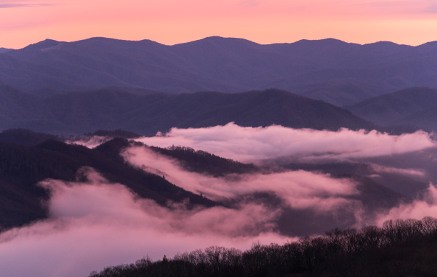Recommending which national parks to visit in your Airstream is difficult, because the answer depends entirely on your personality and background. It’s sort of like asking someone, what should I name my baby?
Lots of people head for a well-known park like Yosemite or Great Smokies, or they visit whatever parks happen to be along their travel route.
If you’re lucky enough to have the time to explore the United States at your own leisure, you’ll begin to develop a sense of the type of parks that interest you the most. That’s crucial, because if you were to try and see all 410 areas within the National Park System, you’d be taking on the task of a lifetime. You’ll want to make the most of your time, especially when deciding whether to visit the more remote parks that lie hundreds of miles off the beaten path.
The range of things you might find attractive in a national park is as diverse as this country. Let’s look at a few topics of interest to see which national parks might fit the bill.
Do you enjoy active sports like hiking, bicycling, or rock climbing? Then you’re in luck. Hiking is a featured activity in nearly every large national park, and, in fact, it’s hard to explore most of the parks without walking at least a few trails.
Cycling is possible in most large parks, even those that aren’t quite known for it. Think of Canyonlands, Saguaro, Natchez Trace, Grand Canyon, and Everglades. One of the most popular parks for cycling has to be Acadia National Park in Maine, where Rockefeller money helped create a network of bicycle and horse-only gravel trails that wind through the interior of the park.

More interested in American history? The bulk of colonial, revolutionary, and industrial American history happened in the east, so it’s no surprise that most of the national parks are along the East Coast, too. Major cities such as Boston, New York, Washington D.C., and Philadelphia are loaded with historical sites, but not many of them offer camping so you’ll have to find a local campground and make day trips to see them all.
On the other hand, the bulk of Native American cultural sites are out west. If you are interested in visiting ancient pueblos and cliff dwellings, aim for the Four Corners region (Utah, Colorado, Arizona, and New Mexico) to visit Mesa Verde, Hovenweep, Canyon de Chelly, Chaco Canyon, Navajo, and Petroglyph, among many others. You’ll also find Native American culture and history interpreted in many other places as well, such as Pipestone National Monument in Minnesota and Nez Perce National Historical Park (which stretches across Idaho, Montana, Oregon, and Washington).
And if you like learning about western expansion history (think Lewis & Clark, the transcontinental railroad, and the Louisiana Purchase), you’ve got your work cut out for you. You have dozens of grand parks you can visit.
Does history make your eyes glaze over? Want to enjoy great scenery instead? No problem. Grab your camera and you can go almost anywhere, but be ready for photographic challenges because many of our greatest landscapes are hard to capture. Think of Death Valley, Grand Canyon, Big Bend, Olympic, or Glacier National Park. Here’s a tip: take lots of “small” photos to capture details and flavors of the park, rather than trying to cram it all into a single shot.
Rustic architecture is a feature of many parks developed in the 1930’s. These parks were developed by the Civilian Conservation Corps and they can be recognized by their classic “parkitecture” style of buildings and signs that combine brown painted wood and stonework.
Some of the best parkitecture is found at Yosemite, Oregon Caves, Yellowstone, Crater Lake, Grand Canyon, Mesa Verde, and Mt. Rainier, but nearly every park that was in existence during the 1930’s will show the style.
If you like lighthouses, you’ll especially like Cape Hatteras in North Carolina, or Oregon Dunes for their many different styles of lighthouses. Beaches? Try any park designated as a National Seashore and you can’t go wrong. You can even try sea kayaking at Isle Royale or Sleeping Bear Dunes in Michigan, Channel Islands in California, or Dry Tortugas or Biscayne in Florida, among others.

If you’re the type who likes to explore by 4x4, go west again. In California, you’ve got excellent choices for off-road or rough-road trails at Mojave, Joshua Tree, and Death Valley. In Utah, try Arches, Hovenweep, or Canyonlands. In Texas, Big Bend has a network of backroads with tent-only campsites for long expeditions. In Colorado, you’ll find 4x4 experiences at Great Sand Dunes, Dinosaur, and Rocky Mountain.
If you’d rather just go somewhere to relax and get away from crowds, a few parks excel at providing visitors with solitude. In particular, try Big Bend or Padre Island in Texas, Death Valley, or Great Basin in Nevada. In this case, you’ll want to avoid the really popular parks like Yellowstone, Great Smokies, and the south rim of Grand Canyon. You can also visit during the shoulder season after school starts.
America’s National Parks really can provide something for everyone. It’s the biggest smorgasboard on the planet, and all you have to do is hitch up your Airstream and start exploring.
Rich Luhr is the editor and publisher of Airstream Life and is the co-founder of R&B Events, the company that produces Alumapalooza and other well-known Airstream events. He also co-publishes the online newsletter Outside Interests and has authored a number of Airstream-related books.








